Sustainable Website Design 2025: A Comprehensive Guide to Reducing Environmental Impact

Learn about sustainable website design in 2025: from choosing green hosting, optimizing images, to energy-efficient design methods. Help you create an eco-friendly website and attract customers.
Sustainable Web Design: Towards a Green Future

In the context of increasingly serious climate change, sustainable web design is no longer an option but a vital requirement. Websites, though invisible, consume a significant amount of energy from servers, data transmission networks, and user devices. Sustainable web design is how we can minimize this environmental impact, contributing to a greener future.
Overview of Sustainable Web Design and Environmental Impact
Sustainable Web Design is the practice of designing and building websites to minimize carbon emissions and other negative environmental impacts. This includes using energy efficiently, choosing renewable energy sources, and optimizing all aspects of the website to minimize resource consumption. A typical website can generate a significant amount of carbon emissions, especially those with high traffic and complex content.
Creating, maintaining, and accessing a website consumes energy at multiple levels: from the servers storing data, to the network devices (routers, switches) transmitting information, and finally to the user devices (computers, phones) displaying the content. This energy is often generated from fossil fuels, contributing to greenhouse gas emissions.
Elements of Sustainable Web Design
To design a sustainable website, we need to consider various factors:
- Green Hosting: Choose a hosting provider that uses renewable energy (such as solar or wind power) or has environmental protection certifications.
- Image Optimization: Use efficient image formats like AVIF and WebP, which offer better compression than JPEG and PNG without significantly reducing image quality. Compress images before uploading them to the website to reduce file size and page load time.
- Using CDN (Content Delivery Network): A CDN helps distribute website content to users from the nearest servers, reducing data transmission distance and thus reducing energy consumption.
- Code Optimization: Minify CSS and JavaScript files to reduce file size and page load time. Remove unnecessary code and optimize code structure to improve performance.
- Minimize HTTP Requests: Reduce the number of HTTP requests by combining CSS and JavaScript files, using CSS sprites for icons, and avoiding the use of too many small images.
- Minimalist Interface Design: A simple, easy-to-use interface not only improves user experience but also reduces the resources needed to load the page. Avoid unnecessary animations and focus on the main content.
- Appropriate Font Selection: Use system fonts or optimized fonts to reduce file size. Limit the use of too many different fonts on one website.
- Effective User Interface (UI/UX) Design: A good user experience helps users find the information they need quickly and easily, reducing the time they spend browsing and thus reducing energy consumption.
Tools and Methods for Measuring Environmental Impact
To find out how much environmental impact your website is causing, you can use the following tools:
- Website Carbon Calculator: This tool estimates the carbon emissions generated by your website based on the amount of data transmitted.
- EcoGrader: EcoGrader evaluates your website's performance based on various factors, including page size, number of HTTP requests, and the use of CDN.
Real-World Examples of Successful Sustainable Websites
Many companies and organizations have begun to adopt sustainable web design practices. A prime example is the website of the non-profit organization *Wholegrain Digital*, with its minimalist design and the use of green hosting. Government websites and international organizations are also gradually transitioning to sustainable design methods.
Steps to Implement Sustainable Web Design
To implement sustainable web design, businesses can follow these steps:
- Planning: Define your goals and outline a specific plan to achieve those goals.
- Supplier Selection: Choose hosting providers, CDNs, and other tools that are committed to environmental protection.
- Performance Monitoring: Use measurement tools to monitor the effectiveness of the measures you have taken and adjust the plan as needed.
Trends in Sustainable Web Design in 2025
In 2025, we can expect the following trends in sustainable web design:
- No-Code Design: No-code platforms allow users to create websites without writing code, helping to reduce development time and resource consumption.
- Using AI to Optimize Energy: Artificial intelligence (AI) can be used to optimize website energy usage, such as automatically adjusting image sizes based on the user's device.
- Integrating Sustainable Elements into the Brand: Businesses will integrate sustainable elements into their brand, demonstrating their commitment to the environment.
Call to Action
Sustainable web design is not only the responsibility of web designers but also the responsibility of all of us. Let's join the sustainable web design movement to build a greener future for our planet.
If you are looking for a reliable partner to build a sustainable website for your business, contact Vinawebapp.com – a professional web design company in Da Nang, Vietnam. With extensive experience and in-depth expertise, Vinawebapp.com can help you create a website that is not only beautiful and effective but also environmentally friendly. They offer green hosting solutions, image optimization, and minimalist interface design, ensuring that your website has the lowest possible environmental impact.
Conclusion
Sustainable web design is a practical action to minimize our negative impact on the environment. By applying the latest design methods and technologies, we can create websites that are not only beautiful and effective but also contribute to a more sustainable future. Let's start today and work together to build a better world.

